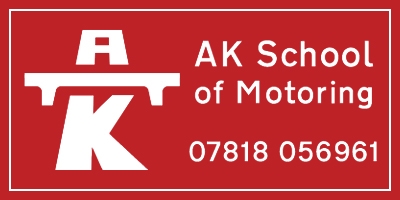
Learning to drive can seem a daunting prospect. Not only do you need to prove to an Examiner that you can safely control a car during the Practical Test, you must also pass the Theory Test to show that you understand the rules of the road.
To make things a little easier, this page brings together some of the wisdom we have accumulated. We hope you find it useful. More information can be found on the official Government website.
To start to learn to drive, you must be:
So, if you wear glasses or contact lenses to see well, you must wear them whenever you drive!
You can apply for your Provisional Licence on-line, but you will need to have to hand: a credit or debit card, proof of identity, your National Insurance Number, and details of all addresses you have lived at in the last three years.
Alternatively, you can apply using the D1 application form, available from Post Office branches, or through the DVLA on-line request form, but this is slower and more expensive.
This is a difficult question to answer, as everyone is different. In our experience, expect to need around 40 hours of tuition. Aim for at least two 1 hour lessons a week, but don't expect to progress at a constant rate – everyone has a wobble or two!
It is also important to have lessons at different times of the day, as well as on different days of the week, as this will ensure that you experience as wide a range of driving conditions as possible.
It is our view that everyone should have at least some professional tuition as professional Driving instructors offer a service that friends and family cannot:
You can be taught to drive by anyone over the age of 21 with at least 3 years driving experience, but we would recommend that you should only have lessons with a qualified instructor to begin with.
Once you have some experience, getting extra practice can be really helpful. But don't have too many people teach you to drive, or you may end up receiving a lot of conflicting advice.
The Theory Test has two parts. First, you will have to answer 50 questions in 57 minutes by selecting the correct answer(s) using a touch-screen computer. The questions are randomly chosen from a set of over 1000 questions. You must get 43 questions right to pass. The test is very straightforward, and you will be given the chance to practise before you start the tests for real. During the test you are able to mark any questions that you are not sure about so that you can easily return to them later.
After this, you will watch 14 one-minute video clips, each showing "developing hazards" involving road conditions, pedestrians or road users. There are 15 hazards to identify (one clip contains two!), and the faster you spot them the more you will score (upto 5 points for each hazard). You need to score 44 out of 75 to pass.
You will need to pass both parts of the Theory Test before you can sit your Practical Test. Although this can be done well in advance (the certificate you receive when you pass is valid for two years), we always recommend that you wait until you have had a few lessons before taking the Theory Test.
While the Theory questions are relatively straight forward, and all are available on-line and in book form to aid revision, the Hazard Perception part is best tackled when you have had at least some experience behind the wheel of a real car!
You can also buy software to use on your computer that will allow you to practice the tests – very useful, especially if you are not very comfortable using computer!
In the 40 minute Pracrtical Test you will be required to demonstrate that you can safely and competently control a car in several different driving situations, amd perform several manoeuvres (which may include performing an emergency stop). To pass, you will have to complete the test without any serious or dangerous faults. Up to 15 minor faults are permitted, things like being in the wrong gear or failing to check your mirrors properly, but four minor faults in the same category will also result in a fail.
You will also have to answer two questions about vehicle safety. One of these requires you to explain how to check something related to vehicle safety (the "tell me" question), the other to demonstrate something on the car (the "show me" question). A full list of the current questions can be found here.
By passing your Driving Test, you have satisifed an Examiner that you are safe enough to be allowed to drive unsupervised. But, you will be one of the least experienced drivers on the road - and your Insurance Premiums will reflect this!
We are registered with the PassPlus scheme, which offers additional training to improve your driving skills and confidence:
We are also happy to offer more informal tuition to boost your confidence once you have passed your test – just ask!